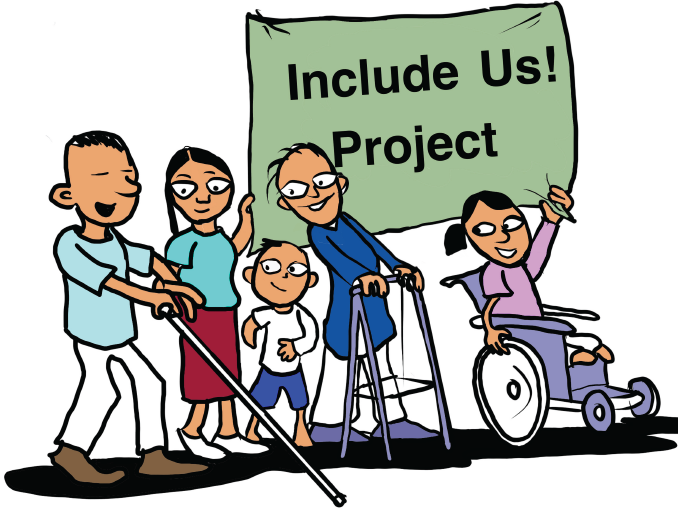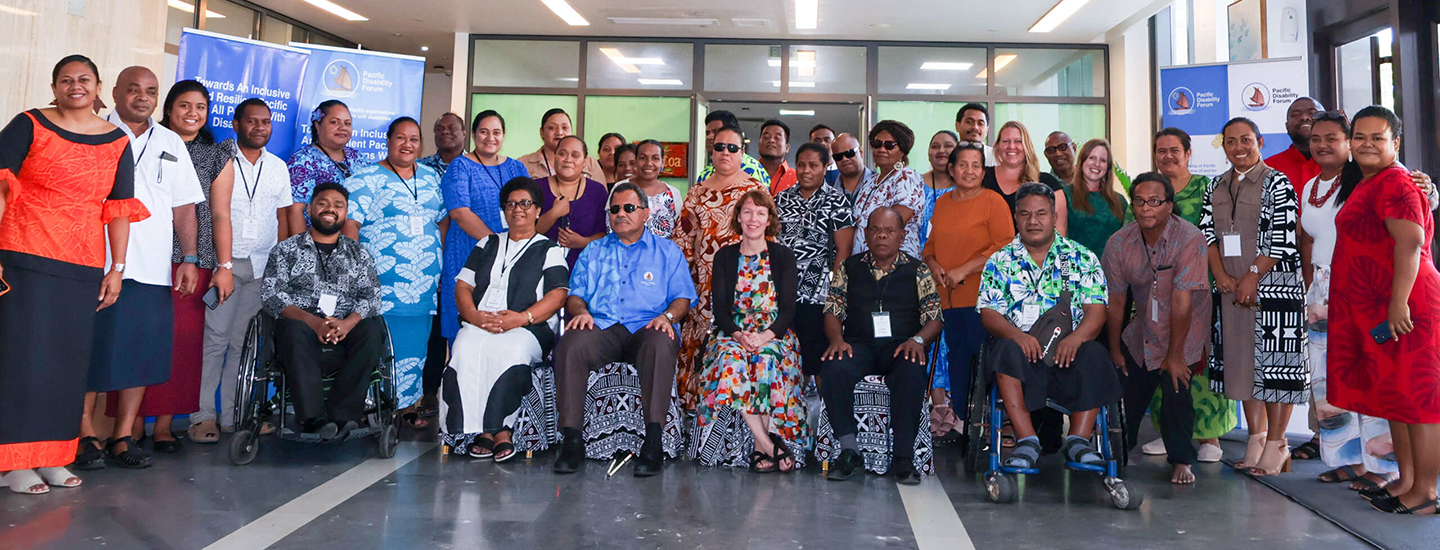United Nations launches the Guidelines on Inclusion of Persons with Disabilities in Humanitarian Action
Stories | November 13, 2019
On 12 November 2019 the United Nations launched the Guidelines of Persons with Disabilities in Humanitarian Action.
The Guidelines will assist humanitarian actors, governments and affected communities to coordinate, plan, implement, monitor and evaluate essential actions for the full and effective participation and inclusion of people with disabilities in all sectors and in all phases of humanitarian action [1].
What is Humanitarian Action?
The United Nations Office for the Coordination of Humanitarian Affairs describes Humanitarian Action [2] as;
- Assistance, protection and advocacy in response to humanitarian needs resulting from natural hazards (like cyclones, flooding or bushfires), armed conflicts or other causes, or emergency response preparedness;
- Based on the premise that human suffering should be prevented and alleviated wherever it happens; and
- Aims to save lives and reduce suffering in the short term, and in such a way as to preserve people’s dignity and open the way to recovery and durable solutions to displacement.
Why is this so important?
There are approximately 1 billion people with disabilities in the world, 80% of whom live in developing countries, and many of these countries experience disasters frequently.
People with disabilities are disproportionately affected by disasters. They are 2-4 times more likely to die in a disaster than people without disabilities and are often excluded from disaster management and risk reduction programmes [3].
The release of these guidelines are an important step forward towards meaningful inclusion of people with disabilities in humanitarian action. They are the first humanitarian guidelines to be developed with and by persons with disabilities and their representative organisations together with humanitarian stakeholders [4].
Once included, people with disabilities will have the opportunity to participate in all phases of humanitarian action, from planning to implementation, ensuring their needs are fully addressed during emergencies and disasters.
This is an important step to ensure no one is left behind when disaster strikes.
The guidelines will be a key contribution to the United Nations Disability Inclusion Strategy (UNDIS) launched by the UN Secretary General last June.
Background
People with disabilities in developing countries have been identified by the UN Secretary-General as a critical group for inclusion under Core Responsibility 3 of the Agenda for Humanity [5] – a five-point plan that outlines the changes that are needed to alleviate suffering, reduce risk and lessen vulnerability on a global scale:
- Prevent and end conflicts
- Respect rules of war
- Leave no one behind
- Work differently to end need
- Invest in humanity
The Agenda for Humanity and its five core principles were welcomed by participants at the World Humanitarian Summit (23 and 24 May 2016) – including 180 UN Member States and 55 Heads of State and Government [6].
One of the key outcomes of the summit was the endorsement of the Charter on the Inclusion of Persons with Disabilities in Humanitarian Action which called for the development of the guidelines [7]. The Charter was endorsed by more than 230 humanitarian, human rights and Disabled Persons Organisations’ networks and organisations, as well as United Nations agencies and governments [8].
Following the summit, the Inter-Agency Standing Committee (IASC) endorsed the establishment of a time-bound Task Team to establish the guidelines (January 2017-December 2018), involving over 600 stakeholders – led by a tripartite co-chairing agreement comprising UNICEF, the International Disability Alliance, and Handicap International [9].
After a vigorous review and validation process, the guidelines have been endorsed and launched at a global launch event in New York, with the participation of the Under-Secretary-General and Emergency Relief Coordinator (ERC), Mr. Mark Lowcock, and Under-Secretary General and UN Secretary-General’s Advisor on Policy, Ms. Ana Maria Menéndez [10]. CBM’s representative at the United Nations, Elizabeth Lockwood and Christian Modino Hok, CBM’s Humanitarian Director also attended the launch in New York.
Read more:
- CBM launches world-first emergency response app (Humanitarian Hands on Tool (HHoT))
- How we can reduce the impact of disasters on people with disabilities
- Ensuring people with disability don’t get left behind – when disaster strikes
- Social connectedness: Disabled Peoples Organisation bring people together in the Philippines
- Gershon promotes disability inclusive disaster risk reduction in his village
References
- Inter-Agency Standing Committee [online] (06.11.2019) https://interagencystandingcommittee.org/
- United Nations Economic and Social Commission for Asia and the Pacific (ESCAP) (2017), Disability in Asia and the Pacific: The Facts 2017 Midpoint Review edition. Retrieved from http://www.unescap.org/resources/disability-asia-and-pacific-facts-%E2%80%93-2017-midpoint-review-edition
- United Nations General Assembly (2016), Outcome of World Humanitarian Summit – Report of the Secretary-General (Seventy-first session). (pg.8)
- Introduction, IASC Disability Guidelines
- AGENDA FOR HUMANITY. 5 Core Responsibilities. 24 Transformations [online] (06.11.2019) https://agendaforhumanity.org/agendaforhumanity
- United Nations General Assembly (2016), Outcome of World Humanitarian Summit – Report of the Secretary-General (Seventy-first session). (pg.2)
- Inter-Agency Standing Committee [online] (06.11.2019) https://interagencystandingcommittee.org/
- As of September 2019, see http://humanitariandisabilitycharter.org/
- Inter-Agency Standing Committee [online] (06.11.2019) https://interagencystandingcommittee.org/
- Inter-Agency Standing Committee [online] (06.11.2019) https://interagencystandingcommittee.org/
https://www.cbm.org.au/stories/united-nations-launches-the-guidelines-on-inclusion-of-persons-with-disabilities-in-humanitarian-action
Related Stories

Vision for all: Why access to eye health is a precondition for inclusion
For millions of people in India, particularly those living...

Easy Read your way through our evaluation report
At CBM Australia, we recognise that accessibility is not optional – it is a...

Growing Stronger Together: Supporting OPDs across the Pacific
CBM Australia is proud to partner with Pacific Disability Forum on the Growing Stronger...
